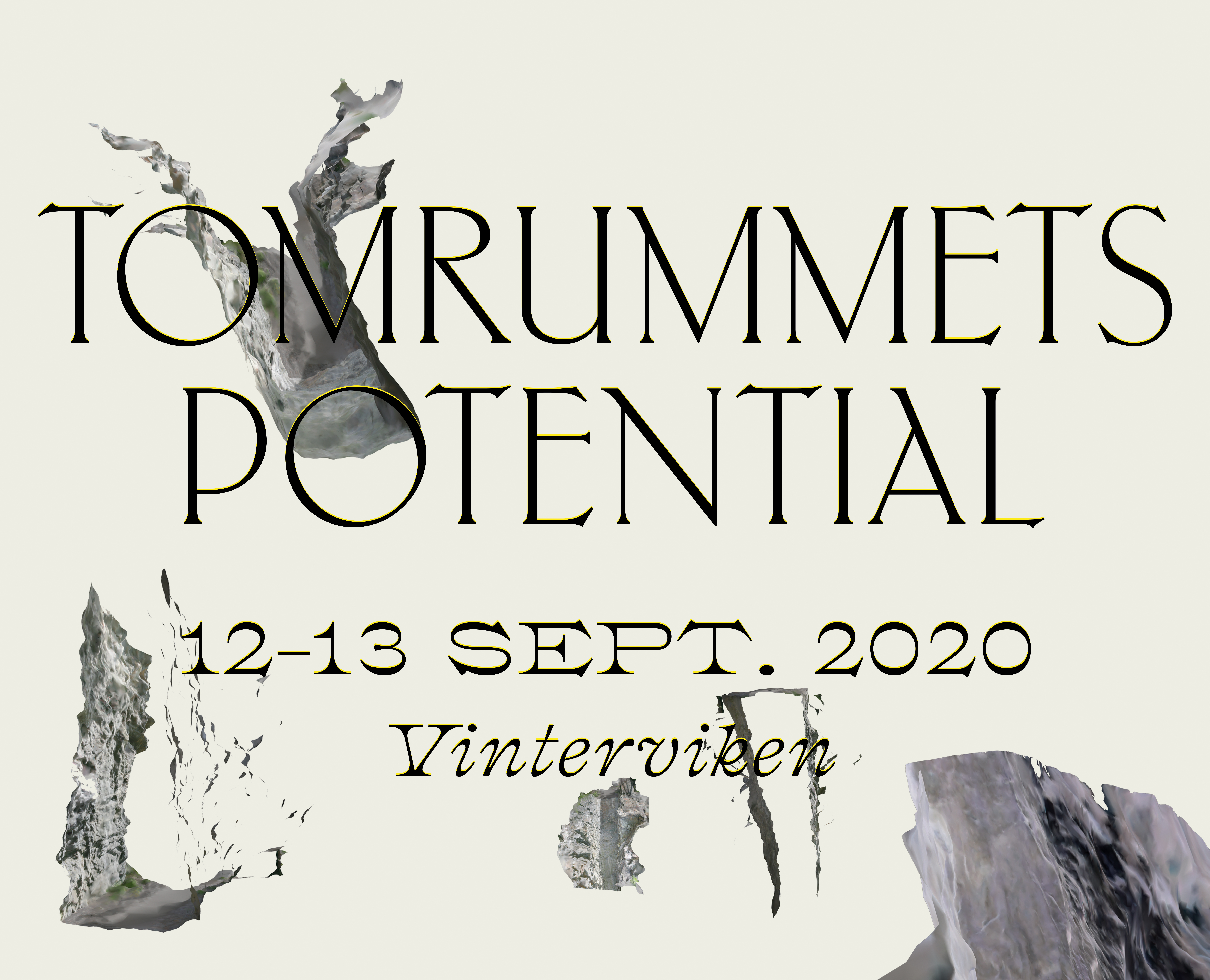Tomrummets Potential
(engl. The Potential of the Void)
YEAR: 2020 | MATERIAL: Site specific 5.1 sound installation, promo film and a publication with a text and collage of photos and drawings | DUR: 16 min
Tomrummets Potential translates The Potential of the Void.
The work was made to be site specifically installed between the remains of two of Alfred Nobels old blasting pits in Vinterviken, Stockholm in Sept. 11-12 2020. It was also availiable through the app Tempus Fugit (when on location) until October 12, 2020. When entering the app, it would let you know the exact location.
Tomrummets Potential translates The Potential of the Void.
The work was made to be site specifically installed between the remains of two of Alfred Nobels old blasting pits in Vinterviken, Stockholm in Sept. 11-12 2020. It was also availiable through the app Tempus Fugit (when on location) until October 12, 2020. When entering the app, it would let you know the exact location.
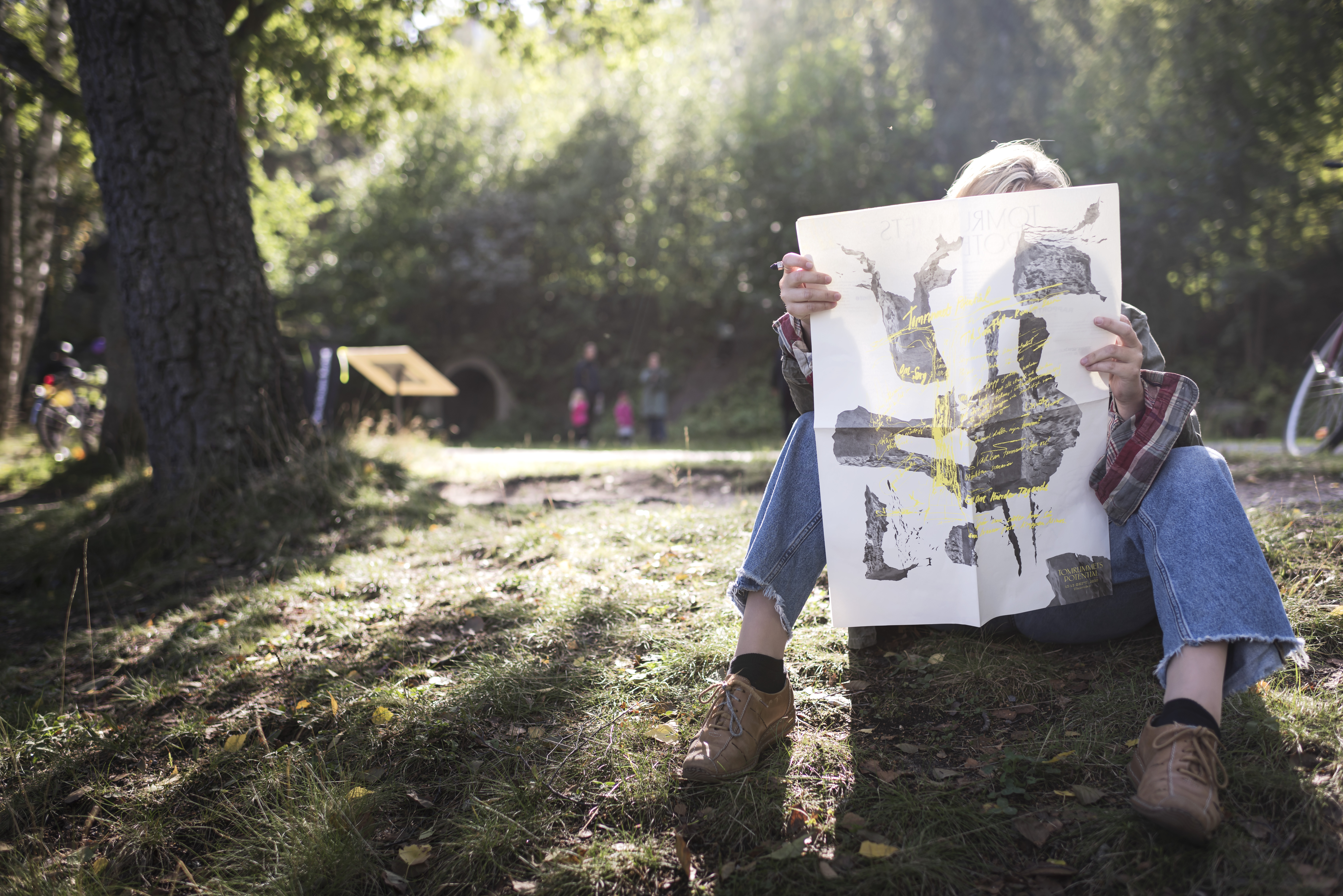
photo by Naina Helén Jåma

photo by Naina Helén Jåma
Stockholm Konst continues with their long-term project with the aim to activate existing public art works in the city. Spring 2020 I was invoted by their project manager Päivi Ernkvist to choose an existing work in Stockholm city to create a temporary activation around. My choice fell on Stina Ekman's amazing sculpture Bergskatedral, located in Vinterviken, in the south part of Stockholm.
Bergskatedral is created as a memorial piece honoring the workers who died during work as employed at Alfred Nobels factory (Nitro Nobel) for dynamite in the late 1800. Bergskatedral resonated very strong with me, both physically and conceptually. It talked about a universal state, time and an ongoing strive. To me her material was the void, the invisible material; the air between the mountain and me, between the late 1800s and now, between Stina and me. So I wanted to stay in this void, and I wanted to work with this invisible, potent material.
With Tomrummets potential I want to create an echo of what’s not heard or seen, but which exists right amongst us. To work with this potential of the void is an attempt to connect the immaterial and the physical, and at the same time point to the human capacity for recovery and will to change.
I did a lot of research about the presence of Nobel in Vinterviken and of the actual accidents that have happened there. This during our very present epidemic Covid-19 that distributes through the air and gets to our breathing systems. So I felt an urge to use the breath, the air and the actual fact that even today there are people that need to work through very uncertain, and dangerous environments. Daily. My work is made to honor for the un-credited people who fight and strive day by day to make things easier for others. But also honoring the fact that we still have the possibility to use this invisible space to holler out and make a change!
Tomrummets potential consists of a 5.1 sound installation, publication with a text, installed between two of Nobels blasting pits across the bay from, and in dialogue with, Stina Ekmans work Bergskatedral.
![]()
![]()
In Tomrummets potential, sounds are heard from multiple times, backwards and forwards at the same time. The area Vinterviken has recently undergone extensive decontamination of the toxins and substances that have been in the ground since hosting Alfred Nobel's nitroglycerin and dynamite production for several decades. Today, Vinterviken has been transformed into a park-like recreational environment for the city's residents. Changes have taken place, while at the same time the birds, the water in the bay, the ground and the valley have been stable there. What information can we let the earth and the mountains echo back to us? What can they tell us about the conditions that have taken place? What is contained in the unspoken, the invisible? What occurs in the void when a place disappears or changes shape? What will emerge in the void that is created when a person dies? Or when one's person is given limited conditions or is not even heard? How can we face the invisible dangers that lie in wait for us?
![]()
Bergskatedral is created as a memorial piece honoring the workers who died during work as employed at Alfred Nobels factory (Nitro Nobel) for dynamite in the late 1800. Bergskatedral resonated very strong with me, both physically and conceptually. It talked about a universal state, time and an ongoing strive. To me her material was the void, the invisible material; the air between the mountain and me, between the late 1800s and now, between Stina and me. So I wanted to stay in this void, and I wanted to work with this invisible, potent material.
With Tomrummets potential I want to create an echo of what’s not heard or seen, but which exists right amongst us. To work with this potential of the void is an attempt to connect the immaterial and the physical, and at the same time point to the human capacity for recovery and will to change.
I did a lot of research about the presence of Nobel in Vinterviken and of the actual accidents that have happened there. This during our very present epidemic Covid-19 that distributes through the air and gets to our breathing systems. So I felt an urge to use the breath, the air and the actual fact that even today there are people that need to work through very uncertain, and dangerous environments. Daily. My work is made to honor for the un-credited people who fight and strive day by day to make things easier for others. But also honoring the fact that we still have the possibility to use this invisible space to holler out and make a change!
Tomrummets potential consists of a 5.1 sound installation, publication with a text, installed between two of Nobels blasting pits across the bay from, and in dialogue with, Stina Ekmans work Bergskatedral.

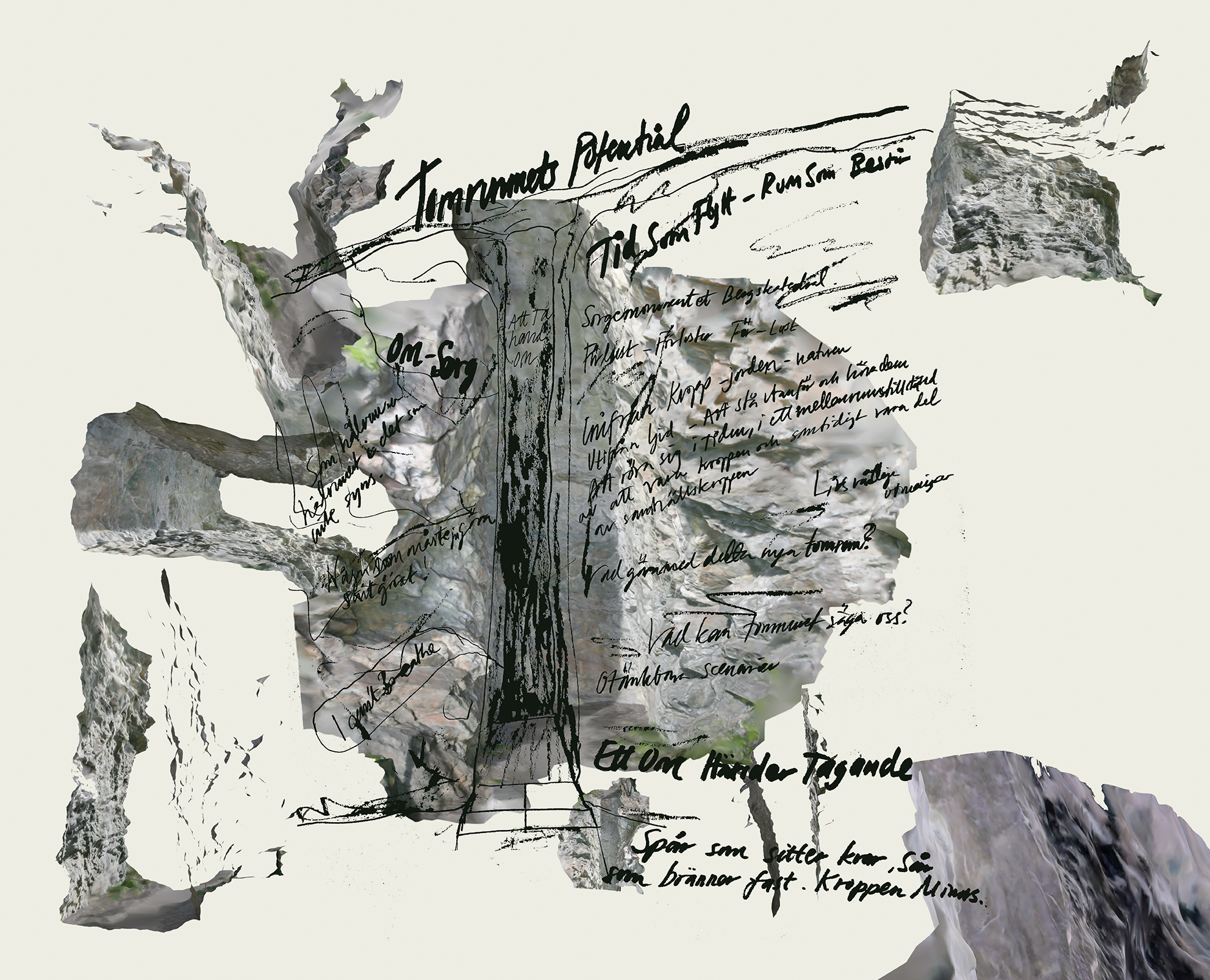
In Tomrummets potential, sounds are heard from multiple times, backwards and forwards at the same time. The area Vinterviken has recently undergone extensive decontamination of the toxins and substances that have been in the ground since hosting Alfred Nobel's nitroglycerin and dynamite production for several decades. Today, Vinterviken has been transformed into a park-like recreational environment for the city's residents. Changes have taken place, while at the same time the birds, the water in the bay, the ground and the valley have been stable there. What information can we let the earth and the mountains echo back to us? What can they tell us about the conditions that have taken place? What is contained in the unspoken, the invisible? What occurs in the void when a place disappears or changes shape? What will emerge in the void that is created when a person dies? Or when one's person is given limited conditions or is not even heard? How can we face the invisible dangers that lie in wait for us?
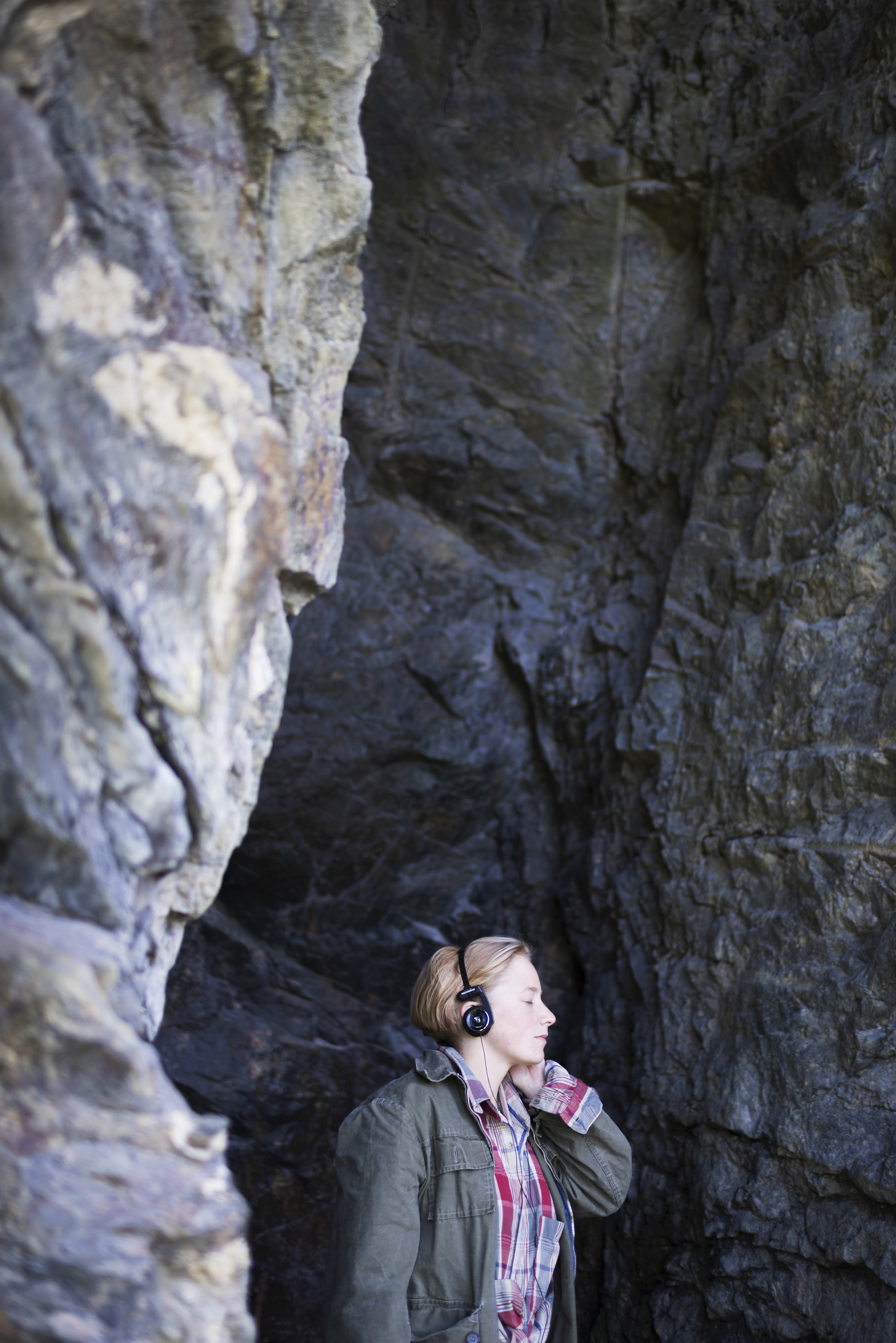
photo by Naina Helén Jåma
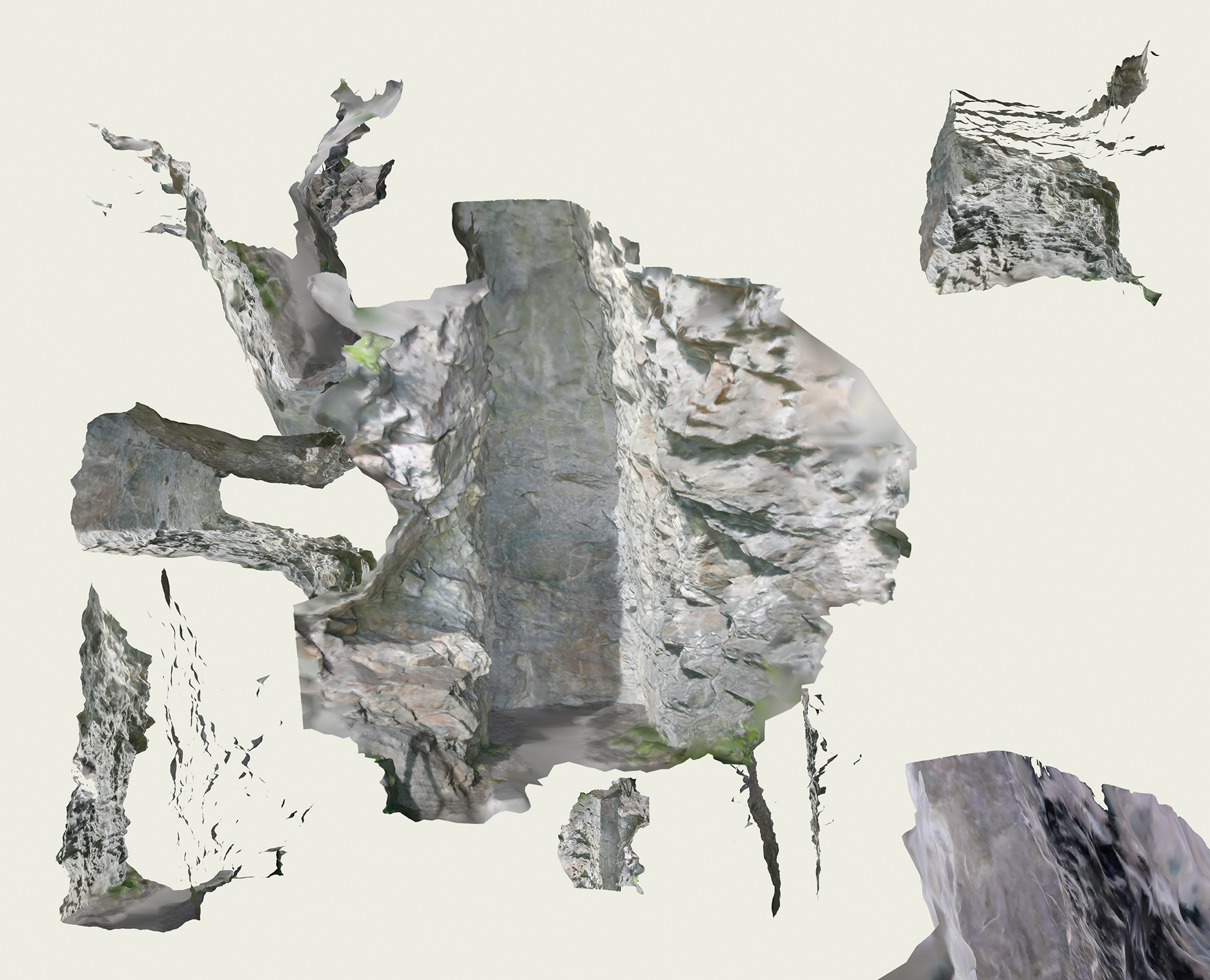
Title Tomrummets potential
Artist Åsa Cederqvist
Sound producer and sound engineer Martin Mighetto Project manager Stockholm konst Päivi Ernkvist
Publication, graphic designer Lina Forsgren
Technically resposible for Tempus Fugit Rebecka Pershagen Gear, sound installation DM Audio, Jesper Windmar
Supported by Svenskt visarkiv/ Musikverket with the contribution of the recordnings of the songs Det var en onsdag visst and Sullan lullan litet barn sung by Karin Grellson, recorded by Matts Arnberg, in Delsbo, Hälsingland, 1968. Kolock and kohorn performed by Sven Bohm, Lydia Knekt Erisson and Hol Ida Matsson, recorded by Svea Ivarsson, in Malung, Dalarna, 1962.
With support from Vintervikens ateljéer, Konstnärsnämnden, Färgfabriken
Thank you Stina Ekman, Christian Edgren and Bim Edgren Cederqvist
Artist Åsa Cederqvist
Sound producer and sound engineer Martin Mighetto Project manager Stockholm konst Päivi Ernkvist
Publication, graphic designer Lina Forsgren
Technically resposible for Tempus Fugit Rebecka Pershagen Gear, sound installation DM Audio, Jesper Windmar
Supported by Svenskt visarkiv/ Musikverket with the contribution of the recordnings of the songs Det var en onsdag visst and Sullan lullan litet barn sung by Karin Grellson, recorded by Matts Arnberg, in Delsbo, Hälsingland, 1968. Kolock and kohorn performed by Sven Bohm, Lydia Knekt Erisson and Hol Ida Matsson, recorded by Svea Ivarsson, in Malung, Dalarna, 1962.
With support from Vintervikens ateljéer, Konstnärsnämnden, Färgfabriken
Thank you Stina Ekman, Christian Edgren and Bim Edgren Cederqvist
